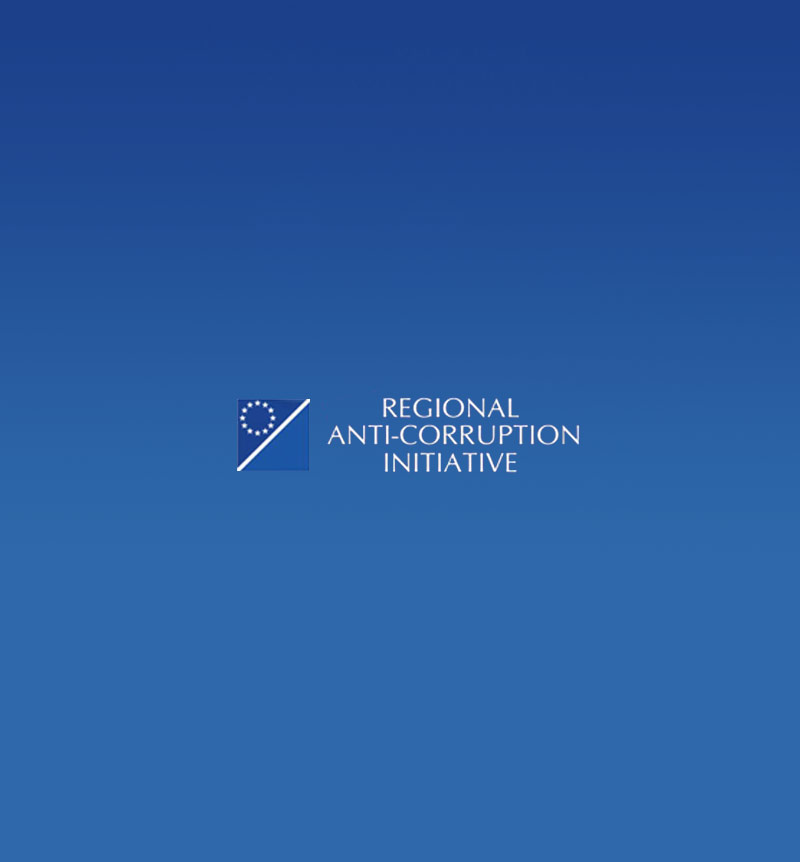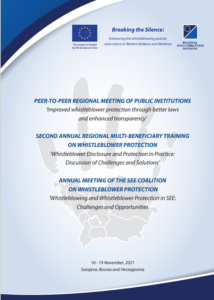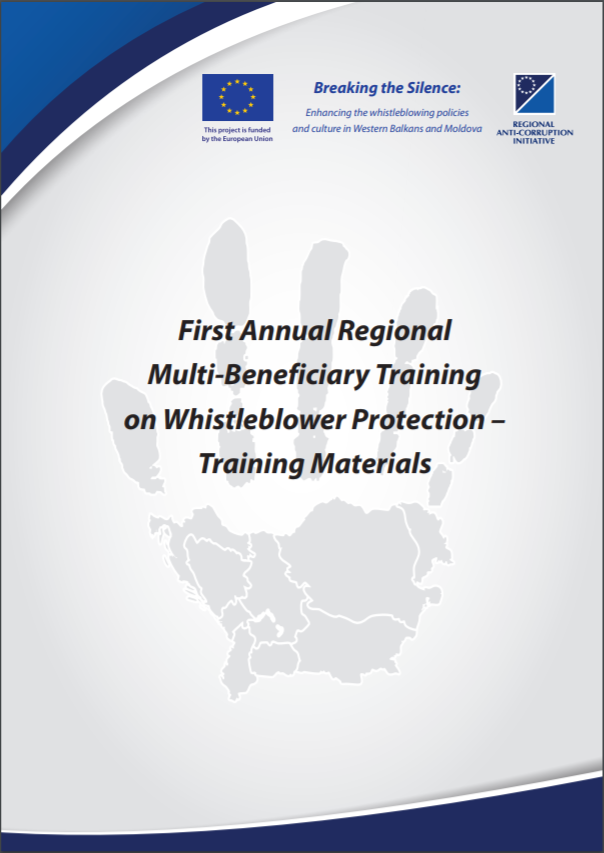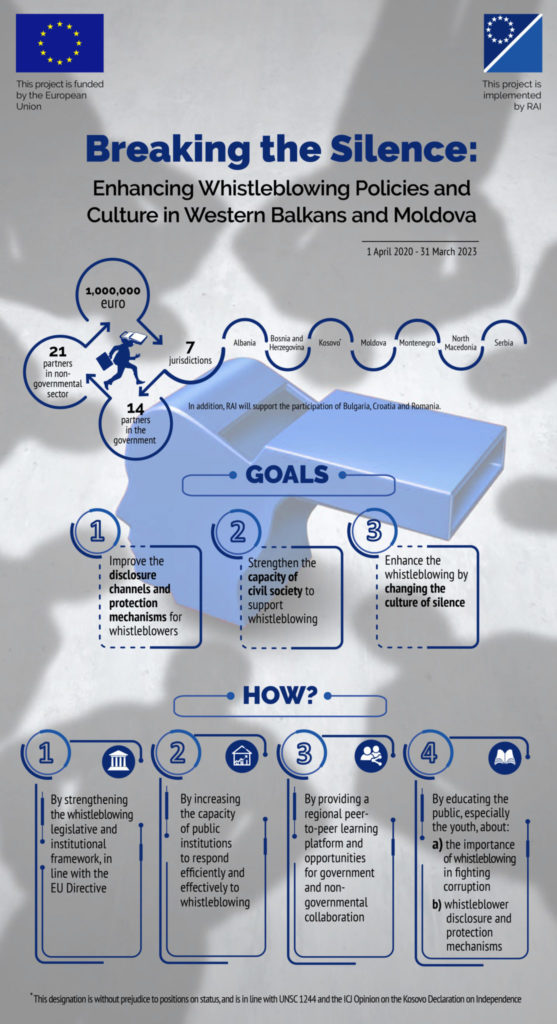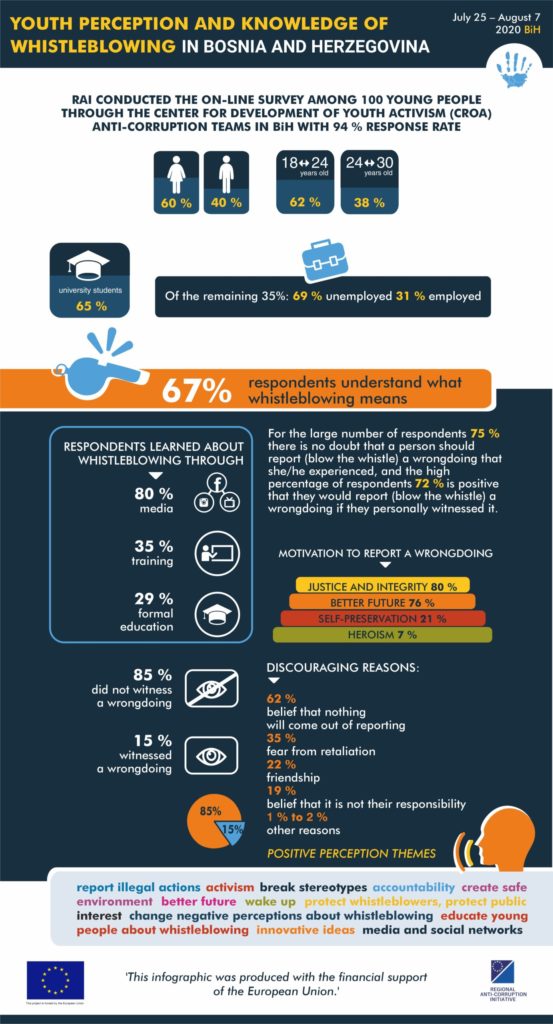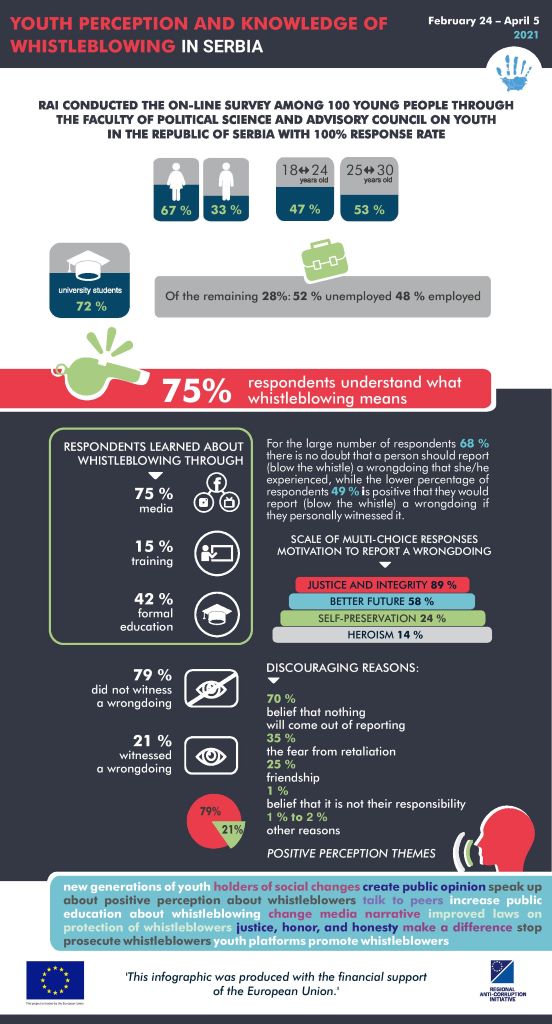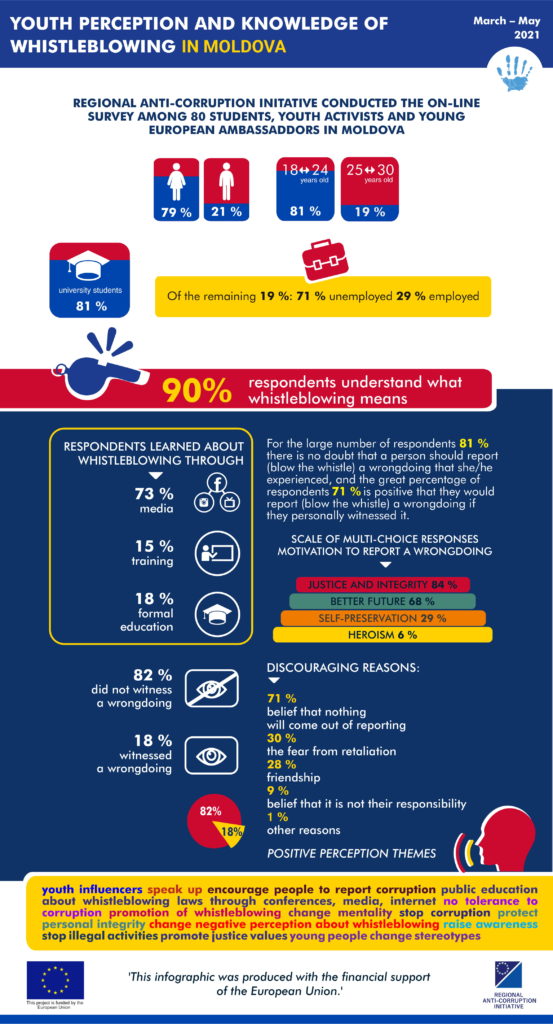Training material, infographics, case studies, surveys, information and communication campaign materials and much more about the RAI and its activities, for stakeholders in beneficiary jurisdictions, counterparts, youth population, and the general public.
Training Material: Second Annual Multibeneficiary event on whistleblower protection (November 2021)
RAI Secretariat delivered the Regional Peer-to-Peer Meeting of Public Institutions on Whistleblower Protection (November 16, 2021), the Second Multistakeholder Training on Whistleblower Protection (November 17 – 18, 2021) and the SEE Coalition on Whistleblower Protection (November 19, 2021) in Sarajevo, Bosnia and Herzegovina.
For more information about the training and the speakers, please follow this LINK.
Training Material: Annual Regional Multi-Beneficiary Training on Whistleblower Protection
Following the Gap Analysis of Whistleblower Protection Laws in SEE jurisdictions, which assesses the level of compliance of these laws with the EU Whistleblowing Directive, the RAI Secretariat delivered a two-day Annual Regional Multi-Beneficiary Training on Whistleblower Protection on February 9 and 11, 2021.
For more information about the training and the speakers, please follow this LINK.
Break the Silence Project Infographic
Through the EU-funded project ‘Breaking the Silence: Enhancing the Whistleblowing Policies and Culture in Western Balkans and Moldova’, the RAI Secretariat works to strengthen the legislative frameworks and institutional arrangements for the protection of whistleblowers in line with the new EU Directive on Whistleblower Protection, and to increase the public awareness, especially of youth, about the importance of whistleblowing through regional-tested advocacy exercises. More infomation about the project is available at the following LINK.
Survey on Youth Views about Whistleblowing
In an online Survey for the RAI’s Breaking the Silence project, 300 young people from Bosnia and Herzegovina, Serbia and Montenegro were asked about the meaning of whistleblowing. While the results showed interesting similarities, it is also noted some differences in the answers of those who would report corruption if they witnessed it. More about youth views, understanding, and values relating to whistleblowing can be read in the below infographics. Stay tuned for more survey results from youth in the other project beneficiary jurisdictions.
The responses to the survey are contributions coming from 80 students, youth activists and Young European Ambassadors in Moldova. From the survey we found that the largest percentage (90%) of young people in this group understand the meaning of whistleblowing. More about youth views, understanding, and values relating to whistleblowing can be read in the below infographic.

